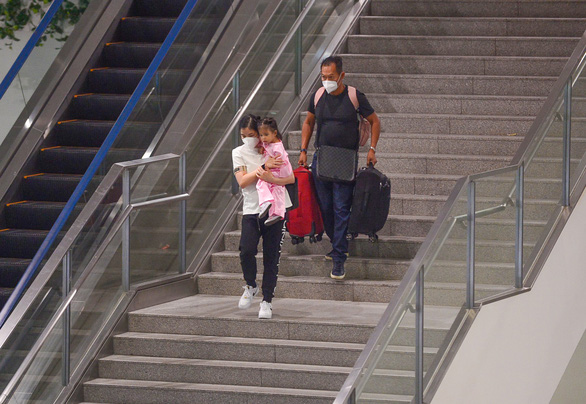It has been three weeks since Vietnam lifted all restrictions on international air transport on February 15, but its aviation industry after some two years of closure due to COVID-19 has yet to fully revive, with more goods than people carried on recent flights.
Among the 89 international flights to and from Tan Son Nhat International Airport in Ho Chi Minh City on March 4, only 37 transported passengers while the rest served cargo transportation, according to the Civil Aviation Authority of Vietnam (CAAV).
Recently, the frequency of international flights to and from Vietnam was 370 flights per week per direction, equivalent to 53 flights per direction per day, while the corresponding figures in the winter flight schedule of 2019 were 4,185 and 598.
From January 11 to February 23, about 200,000 international visitors entered Vietnam, much lower than the four million visitors per month during the peak season in 2019, the CAAV said.
Currently, most of the inbound passengers are overseas Vietnamese, while foreign visitors made up a fractional ratio, Nguyen Quang Trung, head of the Development and Planning Department of Vietnam Airlines, the national flag carrier, told Tuoi Tre (Youth) newspaper.
Many airlines hope that the situation will improve from March 15, when Vietnam fully reopens tourism to international travelers, but some firms are still anxiously waiting for the government’s final decisions on entry conditions, epidemic safety procedures, and others, Trung stated.
Before January, overseas Vietnamese returned in droves to celebrate the Tet (Lunar New Year) holiday, but the number has been falling.
There have been times when some flights had only 60 to 70 passengers aboard each, leaving hundreds of empty seats, the department head elaborated.
Most recently, flights to and from Laos and Cambodia have received just some passengers, while passengers on flights between Vietnam and Thailand and Singapore have been far fewer than expected, said the official.
Flights from Japan to Vietnam have been in the same plight, with many passengers canceling their tickets, causing many planes to operate with passengers accounting for only a-sixth of their capacities, he added.
To attract more international visitors to Vietnam, it is necessary to offer visa exemption or apply simpler visa procedures, said a leader from Vietnam’s low-cost carrier Vietjet.
Some international airlines are not interested in the Vietnamese market because of difficulty in getting slots for flights to the country, the leader said.
Airlines want to sell tickets 60 days before their expected flight dates and reach a seat occupancy rate of 70 percent to ensure profitability, and they need to be granted flight slots early before such sales.
However, such slots are often granted very close to departure dates, thus dampening the ticket sales, the official explained.
In recent times, regular international flights to Vietnam have only arrived in Hanoi and Ho Chi Minh City, not other destinations, said Bui Minh Dang, deputy head of the CAAV’s Air Transport Department.
Some major markets such as South Korea, which sent 10 million travelers to Vietnam in 2019, have been reopened but the number of tourists is still low.
China, which brought seven million visitors to Vietnam in the same year, has yet to resume normal overseas travel because of the Chinese government’s strict epidemic prevention rules, Dang said.
The current high fuel prices, a result of the world oil price hike, have turned operation plans of many airlines upside down.
The representative of a carrier told Tuoi Tre that the global oil rate has been hovering between US$110 and $120 per barrel over the past few days, whereas the firm expected it to be only $80 to $85 per barrel.
“Fuel accounts for 37 percent of our cost so when global oil prices climb $1 per barrel, it may lead to a loss of around VND12 billion [$523,600] per month,” the representative said.
In order to restore operations to pre-pandemic levels, domestic airlines need more government support to overcome current difficulties and improve their competitiveness against foreign competitors, said Bui Doan Ne, general secretary of the Vietnam Aviation Business Association.
Due to the COVID-19 pandemic, Vietnam closed its borders from March 2020 to the end of 2021, with exceptions granted to Vietnamese repatriates, foreign experts, diplomats, investors, skilled workers, and students, provided that they met strict quarantine requirement.
The country piloted a re-launch of regular international flights in early January and the trial ended on February 15, when the CAAV issued a Notice to Airmen (NOTAM) to all air carriers and operators worldwide announcing that Vietnam had removed all restrictions on international air passenger transport so that airlines could restore pre-pandemic operations.
Since erupting in Vietnam in early 2020, the pandemic has caused 4,582,058 infections, with 2,718,440 recoveries and 40,891 fatalities, the Ministry of Health reported.
Like us on Facebook or follow us on Twitter to get the latest news about Vietnam!


















































